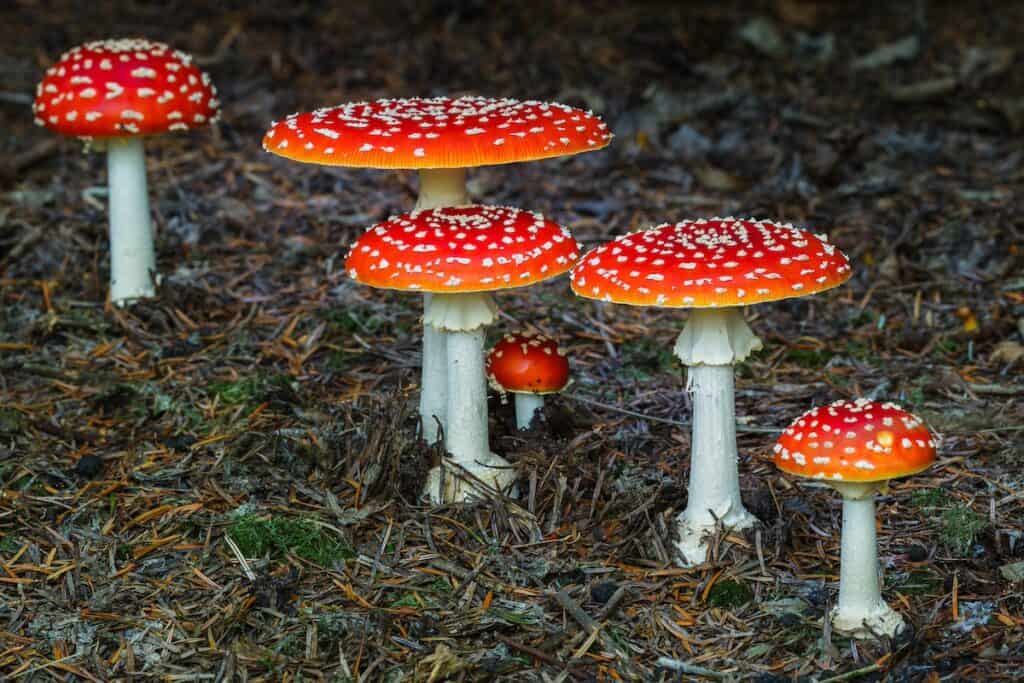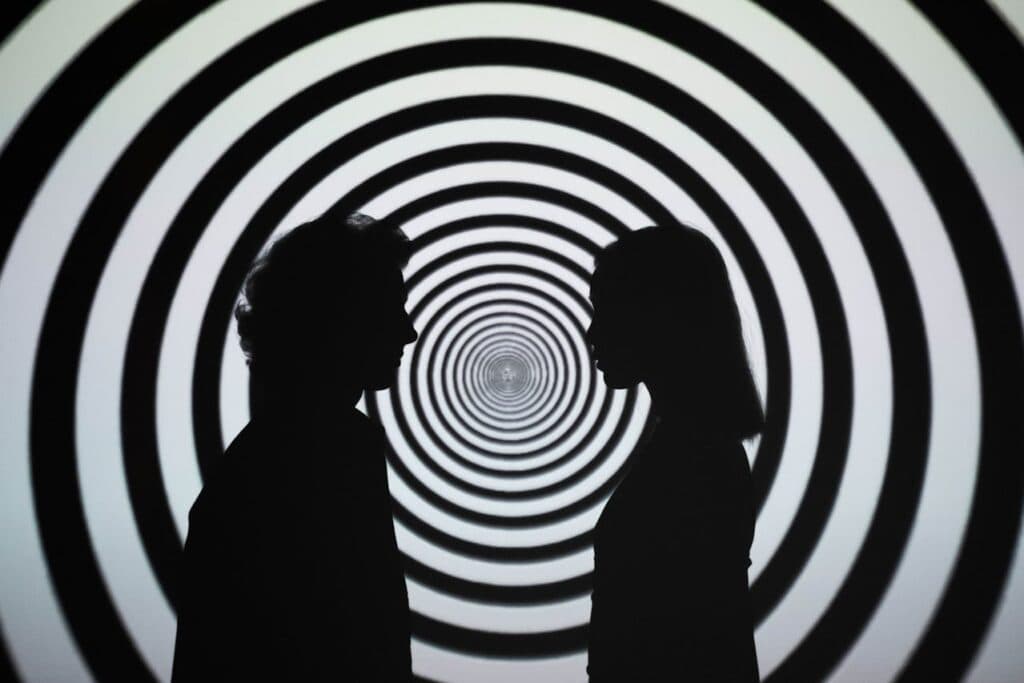Table of Contents
Amanita muscaria, commonly known as the fly agaric mushroom and distinct from psilocybin or magic mushrooms, harbors a complex blend of chemicals that elicit a wide range of effects on the human body and mind, differentiating it from other psychedelics in the fungus family. This iconic red-and-white spotted mushroom, often associated with magic mushrooms and psilocybin mushrooms, has been entwined with cultural folklore, medicinal practices, and psychedelics for centuries, yet its impact on modern users remains shrouded in mystery and intrigue. Understanding the amanita muscaria effects, a type of magic mushrooms, requires delving into both its allure and dangers as psychedelics. The compounds within psilocybin mushrooms, also known as magic mushrooms, can induce psychedelic effects ranging from euphoria to disorientation, making it a substance of fascination as well as caution among enthusiasts and researchers alike. As we explore these effects further, it’s crucial to approach with an informed perspective, acknowledging both the historical significance and potential risks involved, incorporating experiences, analysis, reasons, and science.
Amanita Muscaria Effects: Key Takeaways
- Amanita muscaria, commonly known as the fly agaric mushroom, has a rich history and cultural significance, being used in various traditions for its psychoactive properties.
- Its psychoactive effects, which can range from euphoria to altered states of consciousness, are primarily due to compounds like muscimol and ibotenic acid.
- Beyond its psychoactive properties, Amanita muscaria has been explored for medicinal potential, including anti-inflammatory and neuroprotective effects, though more research is needed to fully understand its capabilities and safety.
- While it contains nutritional value similar to other edible mushrooms, the potential benefits are outweighed by the risks of toxicity and side effects such as nausea, dizziness, and confusion if not properly prepared.
- The legal status of Amanita muscaria varies by country, reflecting a balance between acknowledging its cultural importance and addressing public health concerns related to its psychoactive and toxic properties.
- For contemporary users or those interested in the pharmacological effects of Amanita muscaria on the brain, it’s crucial to approach with caution, respect local laws, and consider the health risks associated with its consumption.
Introducing Amanita Muscaria

Chemistry
Amanita muscaria, a mushroom known for its distinctive red and white appearance and often associated with magic mushrooms and psychedelics, harbors compounds like muscarine that affect the human brain with psychedelic effects. The primary psychoactive components are ibotenic acid and muscimol. Ibotenic acid transforms into muscimol, a potent agonist, through decarboxylation, a process that heightens the mushroom’s potency and produces psychedelics.
This transformation is crucial for understanding amanita muscaria effects. Various alkaloids, including psychedelics and muscarine, within the mushroom influence the nervous system directly, introducing toxic elements with potential adverse effects. These psychedelic substances, acting as agonists, interact with brain receptors altering normal neurological functions and can lead to adverse effects.
Biological Effects
The consumption of amanita muscaria, a psychedelic product, leads to significant alterations in neurotransmitter release within the brain, acting as an agonist with potential adverse effects. This can result in varied changes in perception and mood among users, including adverse effects, especially with psychedelics products for reasons. Some individuals experience euphoria or heightened sensory experiences from psychedelics, while others may encounter disorientation or distress as adverse effects.
These effects, studied in psychedelics, stem from how compounds like muscimol, an agonist, impact both the central and peripheral nervous systems. By binding to specific receptor sites, these chemicals disrupt normal neurotransmission pathways leading to profound psychological and physiological responses with adverse effects.
Toxicity Symptoms
Following amanita muscaria ingestion, several symptoms can manifest in people as indicators of toxicity levels and adverse effects within the body. Early signs of adverse effects often include nausea, vomiting, and muscle twitching which signal initial distress from muscaria species consumption.
As toxicity from acid products progresses, more severe symptoms such as confusion and hallucinations emerge indicating serious poisoning by specific species has occurred, showcasing adverse effects. In extreme cases where high doses have been consumed without intervention, seizures or coma could ensue, illustrating acute toxic reactions to these potent compounds.
Understanding these symptoms is vital for recognizing potential risks associated with amanita muscaria consumption effects on human health and underscores the importance of study on this species in various forms.
The Historical and Cultural Significance of Amanita Muscaria

Siberian Shamanism
Amanita muscaria, a species with a long history of use in Siberian shamanism, involves the study of its form and consumption. Shamans consumed this mushroom as a spiritual sacrament. They believed its consumption helped them induce visions and connect with the spirit world. This study highlights the cultural significance and consumption of the Amanita muscaria species in their community.
The distinctive appearance of the Amanita muscaria species, with its red cap and white plaques form, made it easily recognizable for consumption. This feature played a key role in its selection for spiritual practices among women and species, influencing consumption. Moreover, an unusual aspect of its consumption was the value placed on the urine of women who had consumed the mushroom species. Due to its retained psychoactive properties, women would consume this urine from the specific species to experience similar effects without ingesting the mushroom directly.
Viking Culture
In Viking culture, there is speculation around the usage of the Amanita muscaria species by Berserkers before battles to increase their rage and strength. Although concrete evidence is scarce, many believe that this practice contributed to their legendary ferocity in combat among the species.
Theories also suggest that Vikings might have used Amanita muscaria during ritualistic ceremonies and oracles. Its potential influence on Viking mythology and legends points towards a significant relationship between this mushroom and ancient Norse culture.
Understanding these historical contexts enriches our appreciation for Amanita muscaria’s place within different societies over time. It underscores not only its biological but also its cultural impact across various regions.
The Psychedelic Effects of Amanita Muscaria

Psychoactive Effects
Amanita muscaria mushrooms have psychoactive properties that can profoundly alter one’s state of mind. These fungi induce altered states of consciousness and may cause visual hallucinations. Users often report seeing colors more vividly or shapes transforming in unusual ways.
The experience can swing between euphoria and dysphoria, heavily influenced by the dosage consumed and the individual’s reaction to it. Some find themselves overwhelmed with joy, while others may encounter discomfort or fear. This unpredictability adds a layer of caution to its use.
Moreover, individuals consuming Amanita muscaria often report time distortion—a feeling where minutes can seem like hours—and enhanced sensory experiences. Sounds might appear clearer, or textures could feel more pronounced than usual.
Comparison with Psilocybin
When comparing Amanita muscaria with psilocybin mushrooms, it’s clear there are distinct differences in their psychoactive effects and how they interact with the brain’s chemistry. A key difference is their predictability; psilocybin tends to produce more consistent outcomes across different users compared to the variable experiences reported with Amanita muscaria.
This variance largely stems from their interaction with neurotransmitters in the brain. Amanita muscaria primarily affects GABA (gamma amino butyric acid) neurotransmitters, which play a significant role in regulating nervous system activity. In contrast, psilocybin directly targets serotonin pathways, known for impacting mood, cognition, and perception.
- Pros of Amanita Muscaria:
- Unique visual hallucinations.
- Enhanced sensory experiences.
- Cons:
- Unpredictable effects.
- Potential for dysphoria depending on dosage and individual sensitivity.
Another critical distinction lies in their legal status; many regions around the world treat these substances differently under law due to their diverse chemical compositions and associated health risks.
Medicinal Potential of Amanita Muscaria
Therapeutic Uses
Small-scale studies have highlighted the potential use of Amanita muscaria in treating anxiety and depression. These studies suggest that certain active compounds within this mushroom might help alleviate symptoms. However, more extensive research is needed to fully understand these effects.
Anecdotal evidence has also pointed towards its utility in overcoming substance addiction. Individuals have reported reduced cravings and a diminished desire for addictive substances after using Amanita muscaria. This suggests its possible role in addiction therapy programs.
The anti-inflammatory properties of Amanita muscaria are being investigated as well. Early findings indicate that it could offer relief from inflammation-related conditions, though this area requires further study to confirm efficacy and safety.
Research and Medical Potential
Ongoing studies are delving into the neuroprotective benefits of Amanita muscaria, particularly for diseases like Alzheimer’s. Researchers believe that some active ingredients in the mushroom may protect brain cells from damage or degeneration.
Laboratory settings have seen exploration into the potential antiviral properties of Amanita muscaria. While still preliminary, results hint at a possibility for developing new antiviral medications based on compounds found in this species.
There’s growing interest in Muscimol—a key active compound—as an alternative treatment for epilepsy. Given its impact on neural activity, scientists are examining whether it can safely reduce seizure frequency or severity without significant side effects.
Nutritional Value of Amanita Muscaria
Medicinal Benefits
Amanita muscaria, commonly known as the fly agaric mushroom, has intrigued researchers and herbalists with its medicinal properties. Despite its controversial reputation due to psychoactive components, ongoing research highlights potential health benefits.
One notable area is its analgesic properties. Studies suggest compounds in Amanita muscaria might offer pain relief solutions. This could be a boon for those seeking alternatives to traditional painkillers. The mushroom’s unique compounds interact with the body’s pain receptors differently than over-the-counter drugs do.
Furthermore, Amanita muscaria may bolster the immune system. Specific compounds within the mushroom have been observed to enhance immune function. This could make it a valuable supplement during cold and flu season or for individuals with compromised immunity.
Research also points towards this variety of mushroom having benefits in managing sleep disorders. Its sedative properties could help those struggling with insomnia or irregular sleep patterns find relief.
- Analgesic properties provide an alternative approach to pain management.
- Immune-boosting capabilities support overall health and resilience against illness.
- Potential benefits for sleep disorders offer hope for more restful nights.
The diversity of medicinal benefits offered by Amanita muscaria underscores its potential value beyond recreational use or historical stigma. With careful study and application, it may contribute significantly to natural medicine practices.
Side Effects and Risks of Amanita Muscaria
Common Symptoms
Many users report dizziness and ataxia after consuming amanita muscaria. These symptoms are common even at low doses. The feeling of unsteadiness can make it hard to walk or stand.
Another frequent outcome is an increase in salivation and sweating. This happens more at moderate dosages. It shows the body’s response to the toxins present in the mushroom.
Some people experience changes in their heart rate and blood pressure. These effects vary from person to person. They highlight the unpredictable nature of amanita muscaria’s impact on human health.
Treatment Methods
If someone suspects poisoning by amanita muscaria, doctors often recommend gastric lavage immediately. This procedure cleans out the contents of the stomach quickly to prevent further absorption of toxins.
Using activated charcoal may also help reduce toxin absorption if administered early enough after ingestion. It binds with the substances, preventing them from entering the bloodstream.
Supportive care includes ensuring proper hydration and monitoring vital signs closely. This basic care is crucial for managing symptoms effectively until they resolve.
While exploring nutritional value previously hinted at potential benefits, understanding these side effects emphasizes caution when dealing with amanita muscaria.
Amanita Muscaria Legal Status and Safety
Legal Status
Amanita muscaria’s legal status varies from one country to another. In some places, it is entirely legal to buy and possess these mushrooms. However, they are often sold as decorative items with clear warnings not to consume them.
The laws around Amanita muscaria can be confusing. While some countries allow their sale and possession, others have strict rules against them. The consequences of breaking these laws also differ greatly. They can range from fines to imprisonment depending on where you are.
This mushroom is sometimes available in markets or online as a decorative piece. Sellers must inform buyers about the risks of consuming Amanita muscaria. Despite this, there’s a grey area in how these mushrooms are handled legally across different regions.
Understanding local regulations is vital for anyone interested in Amanita muscaria. Laws change, so staying informed helps avoid unintended legal issues.
Safety Measures
Picking wild mushrooms poses significant risks due to identification challenges. Mistaking Amanita muscaria for an edible variety could lead to severe health problems.
Consuming this mushroom without proper preparation can cause serious toxicity symptoms. These include nausea, hallucinations, and muscle spasms—echoing the side effects discussed earlier but intensified by improper handling or consumption methods.
Here’s what you should remember for safety:
- Always avoid picking wild mushrooms unless you’re with an expert.
- Understand that even with correct identification, consumption requires specific preparation techniques.
Knowing your local laws regarding the possession of such mushrooms is crucial too. It ensures that your curiosity or interest doesn’t accidentally put you on the wrong side of the law.
Contemporary Usage of Amanita Mushrooms
Modern Research
Modern research on Amanita muscaria has shifted towards a more scientific and health-oriented perspective, especially in the pharmaceutical field. Scientists are now focusing on isolating specific compounds from this mushroom for potential medical applications. This effort is significant because it aims at understanding how these compounds can be used safely and effectively.
Research teams globally are conducting studies to examine the dose-dependent effects of Amanita muscaria on cognitive functions. These studies involve controlled environments where participants consume measured doses of compounds extracted from the mushroom. The goal is to understand how different amounts affect brain function, which could lead to breakthroughs in cognitive therapy or enhancement.
Another fascinating area of study involves genetic factors that influence individual reactions to Amanita muscaria compounds. Researchers have discovered that people react differently based on their genetic makeup. This insight could pave the way for personalized medicine, where treatments are tailored specifically to an individual’s genetic profile.
Medical Potential
The medical potential of Amanita muscaria is becoming increasingly apparent as research progresses. One promising area is its use as a non-addictive painkiller alternative to opioids. Given the opioid crisis, finding effective pain management solutions without addiction risks is critical.
Early research hints at its utility in treating certain types of neuroses and phobias. Studies suggest that components found in Amanita muscaria might alter neural pathways associated with fear and anxiety responses, offering hope for those suffering from these conditions.
Furthermore, potential applications in neurorehabilitation for stroke victims are being explored. After a stroke, patients often undergo extensive rehabilitation to regain lost functions like speech or movement control; components within this mushroom might accelerate recovery by promoting neural growth or repair mechanisms.
Pharmacological Effects on the Brain
Pharmacological Effects
Amanita muscaria, a mushroom with distinctive red and white spots, has been known for its unique effects on the human brain. Its primary action is through modulating GABA receptors. This interaction results in sedative-hypnotic effects. People might feel relaxed or sleepy because of this modulation.
The mushroom can also disrupt the cholinergic system at high doses. This disruption leads to confusion or memory loss. It’s crucial to understand these risks before considering its use.
Moreover, Amanita muscaria influences dopamine pathways in the nervous system. This could explain why people report different mood effects after consumption. Some may feel euphoric while others experience mood swings.
Understanding these pharmacological actions is essential for recognizing how Amanita muscaria interacts with our nervous system.
Harness Powerful Amanita Muscaria Effects
Amanita muscaria, with its rich historical tapestry and complex chemical makeup, presents a fascinating subject for both scientific inquiry and cultural exploration. Its psychoactive properties, alongside potential medicinal benefits, highlight the mushroom’s dual nature as both a source of intrigue and caution. The balance between its nutritional value, pharmacological effects, and the risks associated with its consumption underscores the need for thorough understanding and responsible use. The legal status and public health perspectives further complicate its contemporary usage, suggesting a nuanced approach to its integration into modern practices.
The ongoing study of Amanita muscaria’s effects on the brain opens new avenues for research and potential therapeutic applications. It invites scholars, healthcare professionals, and enthusiasts to delve deeper into the mysteries of this iconic fungus. For those fascinated by the intersection of nature, culture, and science, Amanita muscaria remains a compelling topic of exploration. Engage with the latest research, participate in informed discussions, and contribute to the growing body of knowledge surrounding this enigmatic mushroom.
Frequently Asked Questions
What are the psychoactive properties of Amanita Muscaria?
Amanita Muscaria contains compounds like muscimol that act on the brain, producing hallucinogenic effects. Users may experience altered perception and mood changes.
Can Amanita Muscaria have medicinal benefits?
Yes, research suggests potential medicinal applications for Amanita Muscaria, particularly in neuropharmacology and as an anti-inflammatory agent. However, more studies are needed to fully understand its efficacy and safety.
What are the nutritional values of Amanita Muscaria?
Amanita Muscaria is not commonly consumed for its nutritional value due to its psychoactive substances. It’s important to note that it should not be considered a food source.
What risks are associated with consuming Amanita Muscaria?
Consuming Amanita Muscaria can lead to side effects such as nausea, vomiting, confusion, and in severe cases, seizures or coma due to its toxic compounds.
How does Amanita Muscaria affect the brain pharmacologically?
Muscimol and ibotenic acid from Amanita Muscaria bind to GABA receptors in the brain. This interaction alters neural activity leading to its psychoactive effects including hallucinations and changes in sensory perception.
Is it legal to possess or use Amanita Mushrooms?
The legal status of Amaniata Mushrooms varies by country. In some places they’re unregulated while in others their possession or sale might be restricted due to their psychoactive properties.
